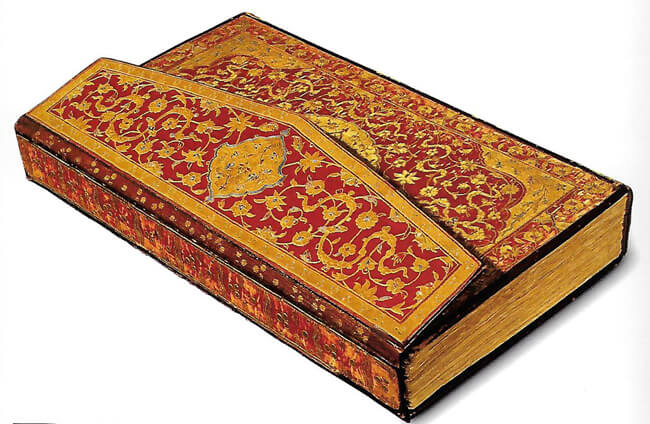-

 Know, the true nature of your Beloved.
Know, the true nature of your Beloved.
In His loving eyes, your every thought,
Word and movement is always –
Always Beautiful.
~ Hafiz
Islamic Arts

Books and Bindings
Early Islamic book bindings consisted of wooden boards covered with leather, with leather straps to hold the book closed. The leather is usually decorated with tooling, a technique in which a pattern is carved or stamped with a metal tool into damp leather. By the 11th century, wooden boards had been superseded by pasteboard, which sometimes comprised recycled paper from other manuscripts. Blind tooling (without gold infill) was still used to decorate the leather.
From the 15th century, blind and gold tooling was found on bindings, which frequently feature medallions and cloud-scroll motifs. A feature specifically associated with Islamic bindings is the flap, attached to the back cover, which when folded inside the front cover protects the front edge of the book, rather like a box. Books were traditionally stacked in piles rather than arranged side by side.
Later examples of lacquer painted bindings, with a papier-mache base and miniature paintings featuring birds, flowers and landscapes, are painted with a layer of brilliant varnish, showing the influence of Chinese ‘qiangjin’ lacquer.
In the late 18th and 19th centuries, many Ottoman and Indian leather bindings were painted with gold or silver, marbling or decorated with jewels and metalwork, creating exquisite book bindings.
Source:- “The Timeline History of Islamic Art and Architecture” by Nasser D. Khalili.
Photo above:- Ottoman Turkish decorated leather book binding of ‘Nusretname’ – a history book, 1584 CE. Source:- Republic of Turkey Ministry of Culture.
